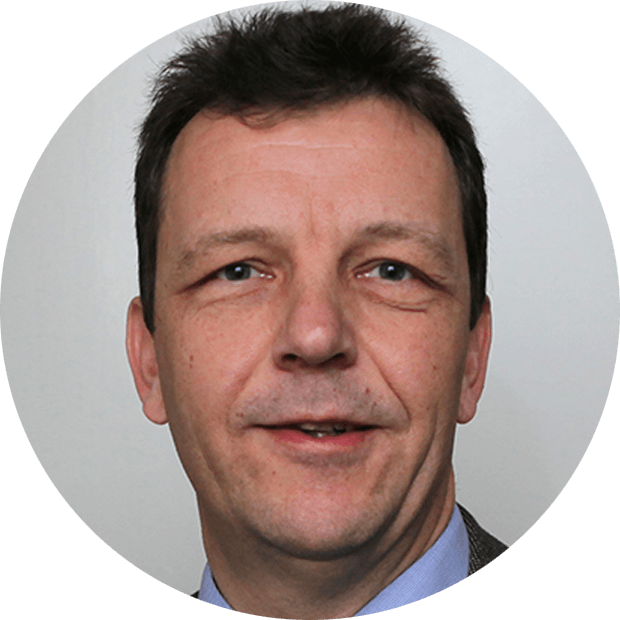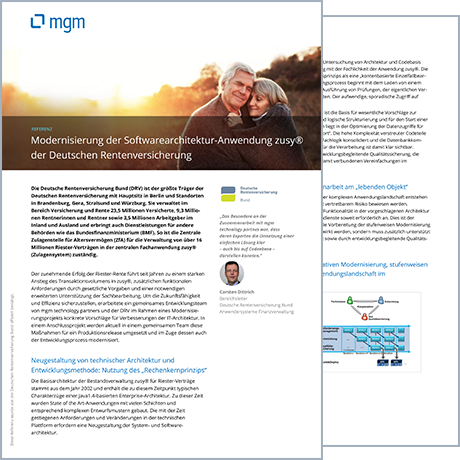The “Deutsche Rentenversicherung Bund” (DRV) is the biggest provider of the German statutory pension insurance scheme with headquarters in Berlin and offices in Brandenburg, Gera, Stralsund and Würzburg. It manages 23.5 million policy holders, 9.3 million pensioners as well as 3.5 million employers national and international in the fields insurance and pensions and also provides services for other public authorities like the “Bundesfinanzministerium (BMF)” (Federal Ministry of Finance). The “Zentrale Zulagenstelle für Altersvermögen (ZfA)” (Central benefitagency for retirement assets) is responsible to manage more than 16 million Riester policies in the central business application zusy® (“Zulagensystem” i.e. bonus system).
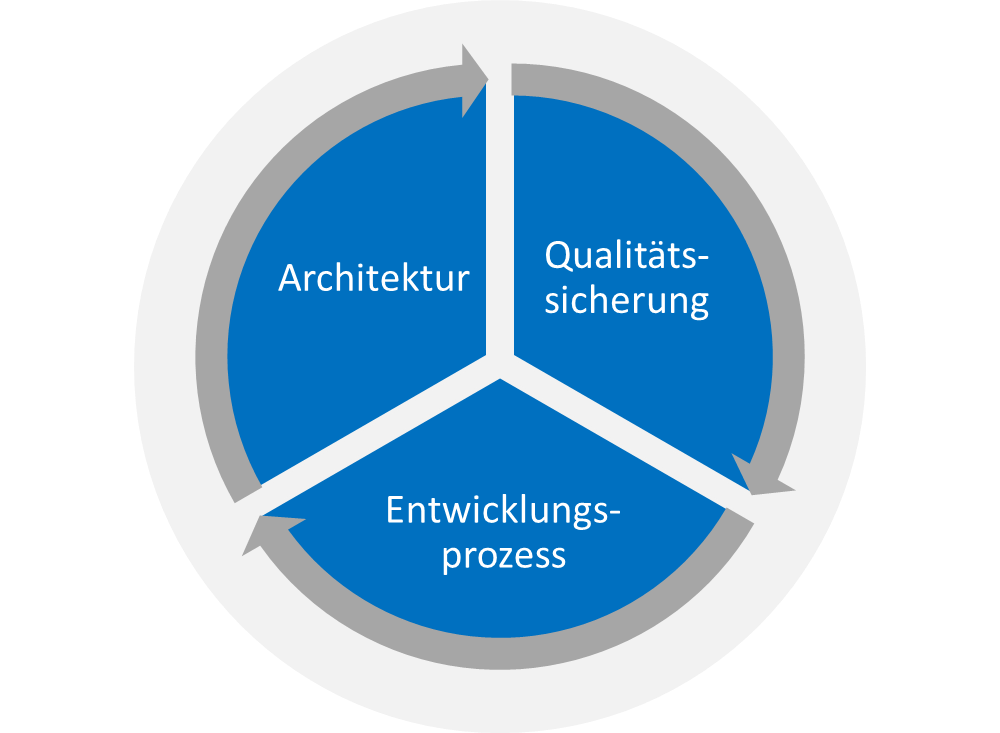
For quite some years the rising success of the Riester pension scheme has led to a strong increase of the transaction volume in zusy®, to additional functional requirements caused by legal regulations and the necessity to extend support for clerical processing. To ensure future sustainability and efficiency, a joint development team of mgm technology partners and DRV developed concrete proposals for improvements of the IT architecture as part of a modernization project. The joint team currently implements these measures for a production release as part of a follow-up project and in the course of it also modernizes the development process.
Redesign of technical architecture and development method: Using the concept “calculation core principle”
The basic architecture of the inventory management zusy® for Riester policies dates back to the year 2002 and exhibits the characteristics of a Java1.4 based enterprise architecture typical of the time. At this time state-ofthe- art applications were built in many layers and with accordingly complex design patterns. Changes to requirements and technical platforms over time call for a redesign of the system and software architecture.
The modernization started with a basic investigation of the architecture and code base conducted by mgm employees and an intensive analysis of the business aspects of the zusy® application. The overall conclusion was the characterization of the functional principle as “account based processing of individual cases with highly seasondependent peak loads”. Nearly every type of processing starts with loading one or several interconnected accounts of the investors, followed by the execution of tests, the actual processing and final filing of the results into the accounts. The time-consuming, sporadic access to additional data could be avoided. This basic idea – we call this the “calculation core principle”– is the base for essential proposals to reduce the complexity of the applications and to structure them clearly and logically and as a starting point for widespread modernization. One priority is to optimize access to data for the basic processing pattern “Import – process – export”. The high complexity of distributed parts of code is reduced through bundling, data validation and business logic is consolidated and database communication encapsulated and thus optimized. This way the base data for processing becomes clearly visible. Additional positive side effects of this structural alignment are developmentrelated quality assurance, de-coupling of the complex application infrastructure which is associated with a simplification of the development process.
Implementation of technical innovations: Collaboration at the “live object”
Good software architectures and the best way to migrate a complex application landscape are not created on paper but must be proven – with acceptable risk – at the “live object”. As part of the development for a release mgm, jointly with the team of DRV, implements business-relevant functionality within the proposed architecture and – if necessary – adapts central system services. This is the so-called “Proof of Concept” of the software architecture and the preparation for a step-by-step modernization of the application. The restructuring cannot be facilitated by technology alone, but has to be supported by an optimization of the development process as well as development-related quality assurance.
Proposal concerning the software architecture and iterative modernization, step-by-step migration and restructuring of the zusy® application landscape for the Riester pension scheme
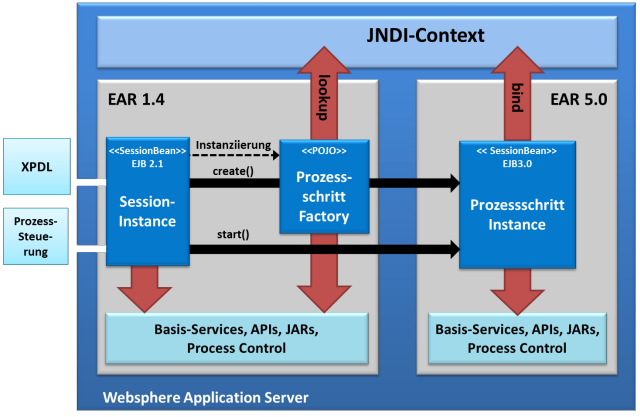
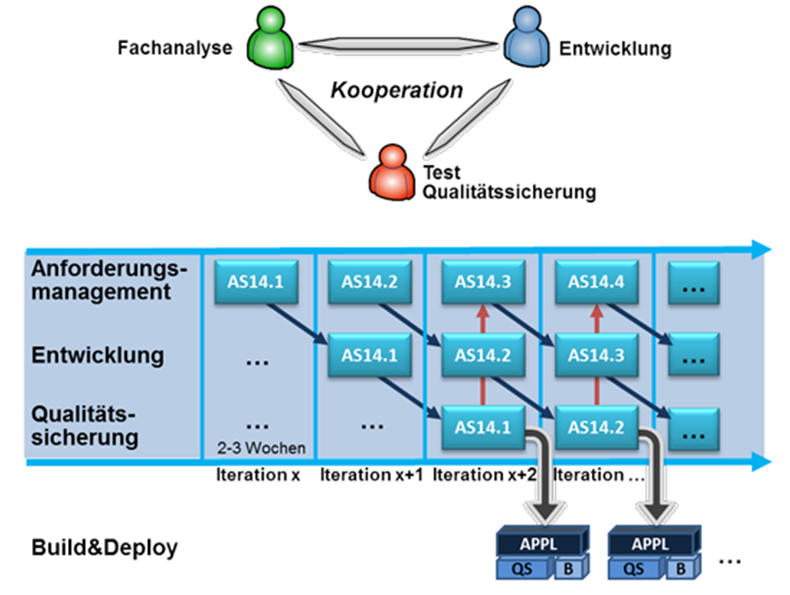
Joint implementation of the architecture proposal and on-going modernization of the development process and quality assurance
To achieve a sustainable modernization of the software architecture, the mgm team members took care to closely coordinate the planned measures in the field of architecture with the modernization of the development process and quality assurance. For the modernization of the development process mgm pursued the customer’s intermediate goal of agile development: Bigger release cycles were divided into shorter iterations each of which creates functionality and value for the complete application and can be tested at an earlier stage. To achieve this goal, the joint team focused specially on continuous integration and the optimization of the development environment.
In the area of quality assurance, development-related testing according to the mgm method was introduced, i.e. an approach to testing that combines a developer’s view with the awareness of being a tester. The result is a clear, simplified target architecture, an efficient approach to development, better quality and more time for the targeted implementation of business requirements and customer wishes.
* This reference has been officially confirmed by the Deutsche Rentenversicherung Bund


